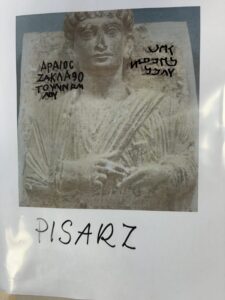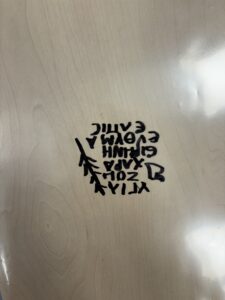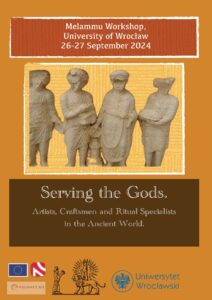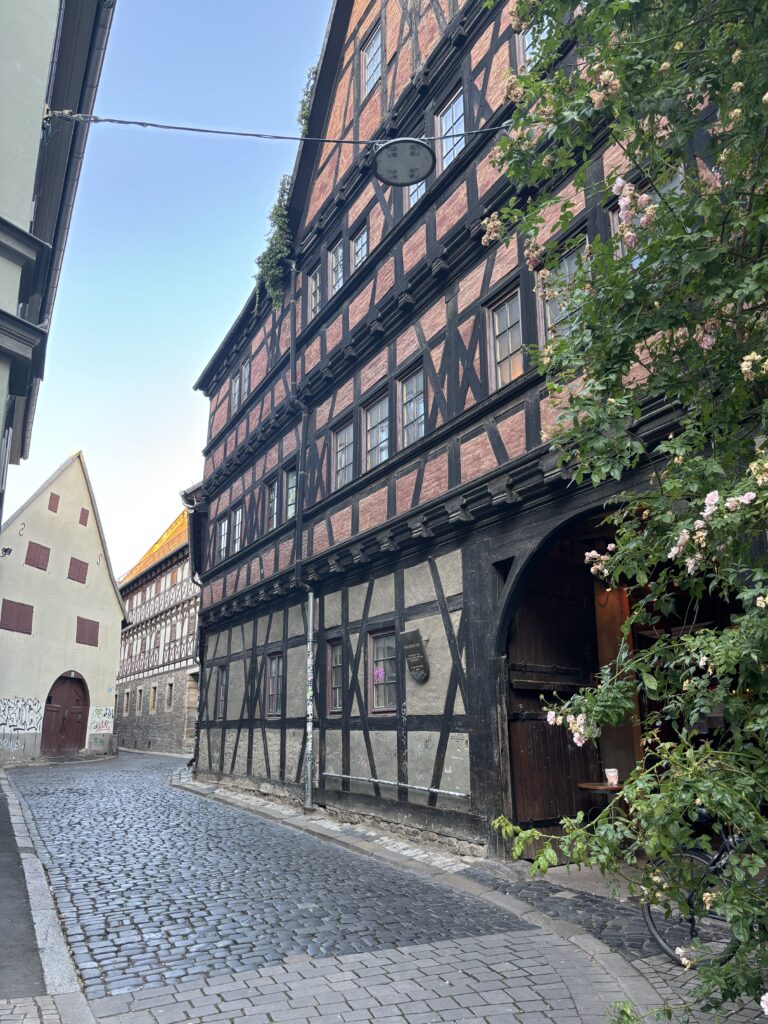Events
Popular Lecture at University of Śląsk (Katowice). March 14. 2025
The PI was invited to give a lecture in Polish at the University of Śląsk during the lecture cycle People-Science-Impact (Ludzie-Nauka-Wpływ). She gives a talk on how the religions deal with the question of spaces, landscape and topographical location. The case study is religioscape of Palmyra and interplay with the geographical features and concepts of deities. Link to the meeting.

December 2024
Aleksandra Kubiak-Schneider participated at the program Eureka at the Polskie Radio Program 1 with a talk about the history of Aramaic and its use during the times of Jesus of Nazareth (emitted on December 25, 2024). She explained why Aramaic became so popular in the course of ancient history and how it replaced Akkadian. She highlighted the situation of Aramaic nowadays talking about the endangered situation of this language. Furthermore she gave some examples of Aramaic expressions from the Bible.
October 2024



Aleksandra Kubiak-Schneider made lessons about the history of writing for the pupils of the 1st and 2nd grades of the primary school, Nowatorska Szkoła Podstawowa ul. Kościeszów 4 in Warsaw. She presented the evolution of writing from the cuneiform scripts to the nowadays alphabet and introducing them to the profession of an epigrapher. At the end of the hands-on lesson the kids could make copies of the ancient inscriptions printed on paper inserted in the plastic pockets.
September 2024

Aleksandra Kubiak-Schneider and Bernhard Schneider organized in September 26-27 2024 the 23rd workshop Melammu Project at the University of Wrocław. The title of the workshop was: Serving the Gods. Artists, Craftsmen and Ritual Specialists in the Ancient World. 23rd Workshop of the Melammu Project Wrocław.Program of the workshop
The aim of this research workshop was to understand the complex role of those people who worked for the temples, including political authorities. All individuals, together with their ethnic and social backgrounds and occupations, present a diverse social and cultural stratum and form networks within the place of worship. Therefore, we wanted to treat this topic through the prism of both archaeology and history and prosopography. This international scientific meeting is the result of work on two projects funded by NCN/ Horizon 2020 grants Polonez Bis 1 and 2: AlAt People of the Gods. Worshippers of Allat and Atargatis in the Near East and beyond from the 4th c. BCE to 4th c. CE and RuBab Rural settlements in Southern Babylonia during the early Age of Empires.
June 2024
Aleksandra Kubiak-Schneider took part in the Summer School Ritual and Religions organised at the University of Erfurt. She deepened her theoretical knowledge about the rituals and exchanged with young scholars on topic of anthropology and history of religions.

April 2024
Aleksandra Kubiak-Schneider presented at the TRAC conference in London. The topic of her talk was: Spatiality of the Worship of the Gods: Sacred Landscape of Palmyra and Palmyrena. This paper oriented on the geographical aspect of the places of cult of deities worshipped in Palmyra and the villages located in the near surroundings, described under the term Palmyrena. Through the analysis of the geographical features like mountains, wadis, springs, arid zones and oasis within the urban and rural spaces, it analysed the deities worshipped by the people within the city as outside in the “rural” zone. Are these two zones complementary or they present completely nonmatching religiospaces? Do we meet same deities there? Furthermore, what can we say about the people seen in Palmyra and in Palmyrena? Do we see the religion of the nomads and the passers-by? What do the sanctuaries in both places look like? Finally, what is the role of Palmyra in the aspect of the cult of the deities? Is the region described as Palmyrena religiously independent or is there any influence and impact from the city? These are the questions which were posed in this presentation.
December, 2023
Aleksandra Kubiak-Schneider was invited by Juan Manuel Tebes and Michael Macdonald to give a talk during the Oxford Arabian Seminar. Her presentation concerned the approach through the topographical lens to the cult of Allat. The talk is recorded and you can listen it here .
November 2023
Aleksandra Kubiak-Schneider was participating at the OMEGA conference (OMNIPOTENS MANUFACTURING AND EMPOWERING GODS IN GRECO-ROMAN ANTIQUITY 1. THE POWER OF THE ONE AND OF THE MANY International Conference) in Madrid. She brought a topic Girls’ Power! Portrait of Atargatis, Allat and Nannaya from the Perspective of Their Worshippers at the Beginning of the Common Era.
Many pieces of the scholar literature were written on the male deities, who are presented in the ancient written sources as the greatest, highest, etc. It is only enough to mention the phenomenon of the multiple dedications to Zeus Hypsistos or Iovis Optimus Maximus. The evidence of the Aramaic inscriptions from the times of the High Empire (1st-3rd century CE expresses this preeminence in the less direct means. Many gods can be great (rb), their excellence is marked by the titles (mr-lord, rhmn’-merciful, etc.), no non-Judaic or non-Christian Aramaic text speak about one. Less of the complex attention however was set on the Eastern female deities (excluding Isis and Ishtar), their rank, representation in the god-dome, and the relations of the individual worshippers. The survey through the epigraphic material concerning these female deities provide an insight how different people sensed their goddesses and which rank they provided to the female divine power, which come into view through the complex analysis not less important than the masculine authority. What is more it was attractive to both men and women, according to the material. By the means of the divine onomastics (titles, epithets) as well as of the anthroponymy we can trace the notion of the uniqueness and excellence of the goddesses.
Atargatis, the only one (from many others) Dea Syria named this way in both literary and epigraphic sources and represented, e.g., in the famous relief from Dura-Europos, presents herself as higher than the thunder god Hadad. Is this only a choice of an attached devotee? Or she had a much more distinctive position than her divine husband? Finally, was she only an amalgam of different goddesses as the researchers want to interpret her?
Second goddess, Allat, was worshipped by many different people. Her name is translated as “The Goddess”, what points out her uniqueness. Furthermore, in the Nabatean and Northern Arabic texts the term ‘lt is used as generic title attached to the female deities (similar interplay to the Aramaic ‘str’ – Ishtar who became the model of a goddess). She bears the title of the divine patron of the kings in Hatra and in Nabatea, in Palmyra she is called the Lady of the House/Temple.
Third goddess, Nannaya, presented in the inscription from the surroundings of Hatra as the great one and the king (mlk – intentionally used in masculine grammar gender, what makes the goddess very particular and unique). Both with Allat pretend to be identified with Our Lady (mrtn) from Hatra, while in Palmyra her cult is not so much vivid in the epigraphic sources. Furthermore, theophoric anthroponyms with the component with Nannaya and Allat present the devotion to these goddesses, also presenting them as the great ones, praised and exceptional.
Analyzing these three goddesses as case studies we can arrive to the same conclusions that the henotheistic attitudes are not only reserved to the male deities or to Isis or Cybele-the most famous figures in the divine map of ancient deities.
September 2023
Aleksandra Kubiak-Schneider made an open lecture during the Dolnośląski Festiwal Nauki about the landscape approach towards the ancient cults, basing on the example of the cult of Allat.
March 10, 2023
Aleksandra Kubiak-Schneider promotes her book „Dédicaces sans théonyme de Palmyre. Béni (soit) son nom pour l’éterinité » (https://brill.com/display/title/60348) at the seminar series of Early Text Cultures in Oxford, UK. She will be shortly speaking about the current project.